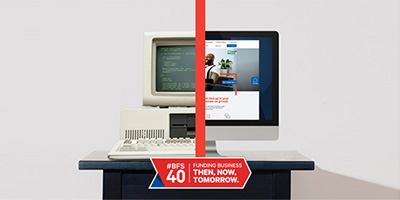Invoice Factoring vs Business Overdraft
Businesses looking to improve their cashflow should consider alternatives to the traditional overdraft or bank loan to manage day to day operations more effectively and to provide the flexibility to grow the business.
Businesses not wishing to add further debt could consider invoice factoring as a viable alternative. But what is it and how much will it cost? Here we demystify invoice factoring and explain what it is and what you need to know before making your decision on whether to apply for invoice factoring or for a bank overdraft.
Invoice Factoring
An invoice factoring organisation agrees to advance you the majority of the money owed on an invoice you’ve issued to your customer, usually between 80 and 95 percent, minus the factoring organisation’s fee for the service.
This means you receive the money you’re owed 30 – 120 days before your customer pays. The advantages of this are many – knowing you’ll receive money means you can negotiate better payment terms with your own suppliers, build stronger relationships with your customers and employees, and invest in marketing your business.
Using a factoring provider means you have peace of mind knowing you will receive payment around 24 hours after you issue the invoice. And the more invoices you issue, the more cash you build, with no further need to negotiate additional payment contracts with the factoring organisation or provide further collateral. Usually factoring contracts run annually, but they can be shorter-term.
Business Overdrafts
You apply for a business overdraft through your bank. Essentially an overdraft is a credit facility that allows you to access cash up to a specified account limit.
Most overdrafts run annually meaning that if you wish to extend your limit within the year, you would have to renegotiate terms with the bank. Additionally, banks usually ask for collateral to secure the overdraft.
If you go over your agreed overdraft limit, you’re liable for extra charges and penalties. Overdrafts can also be withdrawn without notice.
Comparisons between Invoice Factoring & Business Overdrafts
Collateral
With invoice factoring, your invoices are your primary collateral. The creditworthiness of your customers is key. An overdraft may require a charge over property or equipment.
Flexibility
Factoring more invoices means your access to cash grows exponentially. Once you’ve reached a limit on your overdraft, you have to pay it off or renegotiate. Many banks have strict lending criteria based around credit scores. If you have a bankruptcy in your background, it’s highly likely you’ll be turned down.
With Factoring, providers tend to be more interested in the creditworthiness of you and your customers – they will consider those with bankruptcy in the past and those starting-up.
Fees
You should consider how much flexibility you need with your funding when considering which solution is the best match for your business.
Overdraft facilities may cost less than factoring services on the surface. Overdraft interest is charged at the agreed rate. However, if the overdraft amount exceeds the agreed terms, then charges will be higher and potentially the overdraft will be withdrawn.
Whatever option you choose, invoice factoring or business overdraft, ensure you read the small print and understand the process. Also, ask what other services your financial services provider can offer to help your business expand.
Bibby Financial Services offers flexible invoice factoring solutions designed to help improve business cashflow. For more information call us on 0808 501 6462.



